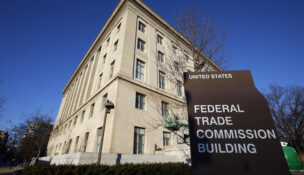Statute of repose trumps safe place statute
By: dmc-admin//May 11, 2005//
The 10-year builder’s statute of repose applies to claims under the safe place statute that arise from design defects, the Wisconsin Court of Appeals held on May 3.
In 2001, Julie Mair was skiing at Trollhaugen Ski Resort. She entered the bathroom, where she stepped on a recessed floor drain and fell, breaking her leg. The resort was constructed in 1976 and there have been no modifications to the bathroom since then. According to industry standards, the drain should be level with the floor.
Mair filed suit against Trollhaugen, alleging common law negligence and violation of the safe place statute, sec. 101.11. Trollhaugen moved for summary judgment, arguing the claims were barred by sec. 893.89, which contains a 10-year statute of repose for claims arising out of a design or construction defect. Because the resort was constructed in 1976, Trollhaugen argued any claims relating to the design or construction of the bathroom were barred after 1986.
Mair conceded that her negligence claim was barred, but argued that her safe place claim was not, because the statute imposes an ongoing duty to keep a structure safe. Polk County Circuit Court Judge Molly E. Galewyrick agreed with Trollhaugen and granted summary judgment on both claims.
|
What the court held Case: Mair v. Trollhaugen Ski Resort, No. 2004AP1252. Issue: Does the 10-year builder’s statute of repose bar a claim against an owner under the safe place statute based on a design defect? Holding: Yes. Where the defect is a structural defect that dates to construction of the building more than 10 years before the injury, the statute of repose bars suit against the property owner. Counsel: Michael J. Brose, New Richmond, for appellant; Todd Joseph Koback, Wausau; W. Thomas Terwilliger, Wausau, for respondent. |
Mair appealed, but the court of appeals affirmed in a decision by Judge Gregory A. Peterson.
The statute of repose, sec. 893.89, provides: "(1) In this section, ‘exposure period’ means the 10 years immediately following the date of substantial completion of the improvement to real property. (2) Except as provided in sub. (3), no cause of action may accrue and no action may be commenced, including an action for contribution or indemnity, against the owner or occupier of the property or against any person involved in the improvement to real property after the end of the exposure period, to recover damages for any injury to property, for any injury to the person, or for wrongful death, arising out of any deficiency or defect in the design, land surveying, planning, supervision or observation of construction of, the construction of, or the furnishing of materials for, the improvement to real property."
The safe place statute, sec. 101.11, requires that an owner furnish a place which "shall be safe…," and requires owners to "construct, repair or maintain" the building safely.
Mair argued that the safe place statute imposes an ongoing duty to furnish a safe building, noting that the owner’s duty has three parts — (1) construct, (2) repair and (3) maintain — and contended that, even if liability for a defective construction may be eliminated by the statute of repose, the owner still has a continuing responsibility to repair and maintain the premises.
But the court found Mair’s argument flawed, because of lack of notice on Trollhaugen’s part. The court noted that owners are generally liable for two types of conditions that cause injury: (1) structural defects; and (2) unsafe conditions associated with the structure of the building.
For structural defects, the owner is liable regardless of whether he knew the defect existed, but any claim based on failure to construct a safe building is barred by the statute of repose.
| |
||
|
Related Links Related Article |
||
| |
||
The second type of condition — unsafe conditions associated with the structure of the building — arises when an originally safe structure is not properly repaired or maintained. For such defects, however, the owner is only liable if he had actual or constructive notice of the defect.
The court thus held summary judgment was properly granted by the circuit court, reasoning, "Here, there is no evidence of actual or constructive notice that the recessed drain was unsafe. No one had ever fallen in this location before, and there is no evidence that Trollhaugen knew, or in the exercise of reasonable care should have known, that the condition was unsafe. Therefore, Trollhaugen cannot be held liable for violating an ongoing duty to keep the premises safe."
Click here for Case Analysis.
David Ziemer can be reached by email.
Legal News
- FTC bans non-competes
- Gov. Evers seeks applicants for Dane County Circuit Court
- Milwaukee man charged in dismemberment death pleads not guilty
- Democratic-led states lead ban on the book ban
- UW Madison Professor: America’s child care crisis is holding back moms without college degrees
- History made in Trump New York trial opening statements
- Prosecutor won’t bring charges against Wisconsin lawmaker over fundraising scheme
- Republican Wisconsin Senate candidate says he doesn’t oppose elderly people voting
- Vice President Harris to reveal final rules mandating minimum standards for nursing home staffing
- Election workers fear threats to their safety as November nears
- Former law enforcement praise state’s response brief in Steven Avery case
- Eric Toney announces re-election bid for Fond du Lac County District Attorney
WLJ People
- Power 30 Personal Injury Attorneys – Russell Nicolet
- Power 30 Personal Injury Attorneys – Benjamin Nicolet
- Power 30 Personal Injury Attorneys – Dustin T. Woehl
- Power 30 Personal Injury Attorneys – Katherine Metzger
- Power 30 Personal Injury Attorneys – Joseph Ryan
- Power 30 Personal Injury Attorneys – James M. Ryan
- Power 30 Personal Injury Attorneys – Dana Wachs
- Power 30 Personal Injury Attorneys – Mark L. Thomsen
- Power 30 Personal Injury Attorneys – Matthew Lein
- Power 30 Personal Injury Attorneys – Jeffrey A. Pitman
- Power 30 Personal Injury Attorneys – William Pemberton
- Power 30 Personal Injury Attorneys – Howard S. Sicula











